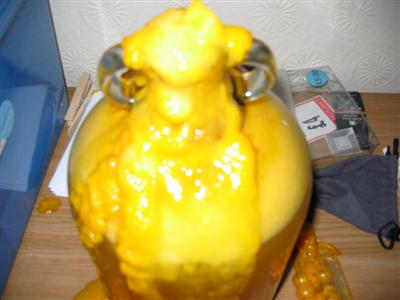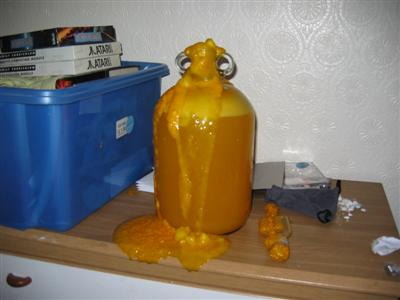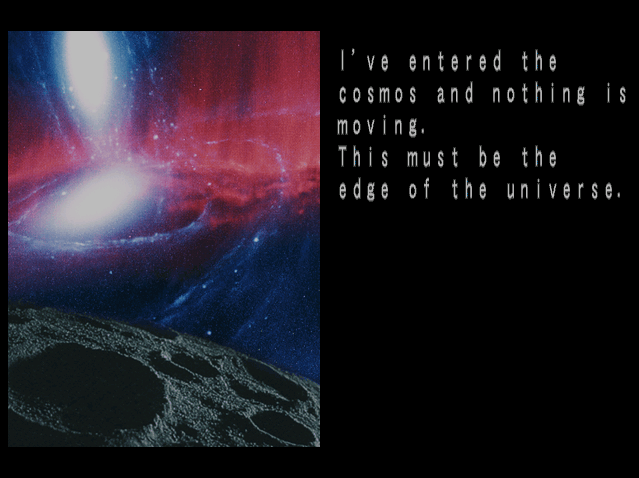For the last few months, Claire and my GameCube has been broken. It broke at one point, which I attributed to the drive motor being jammed up
with dust and hair and crap, so I opened the lid and wiggled a knife-blade around inside it for awhile, which seemed to fix it… but a couple of weeks later, it was dead again. I decided
to have another look into this, yesterday, and a little bit of research online revealed that the problem was probably that the strength of the laser had degraded, rendering it unable to
read any discs. This is, apparently, one of the most common causes of death for the GameCube (and I’ve seen a good number of ‘cubes go on eBay which
would appear to have exactly this problem). Thankfully, there’s a really well-written guide on lens
calibration for the gamecube, which helped a lot. However, the thing that’s lacking online is a photographic guide: so, as part of this ‘blog entry, I’ve written one.
Usual disclaimer: following this guide will void your warranty. Plus, if you do it the way I did it, you risk electrocution, exposure to laser radiation, and worse yet, you may break
your GameCube beyond repair.
I recommend that you read the guide to lens calibration for the gamecube – it’s far more in-depth
than this blog entry. However, this blog entry has prettier pictures.
Symptoms
- GameCube fails to load games – it claims that the disc is missing or unreadable, and will only load up as far as the “configuration cube” screen with the funky ambient noises.
- Open the lid and detach the clips under the lid to release the circular plastic Nintendo-branded thing that sits on top of the lid: this will allow you to watch the disc spinning
while the ‘Cube is running, even with the lid closed. Try again – the disc will start to spin (so, it’s not a broken drive motor) but then stop (when the system finds it can’t read the
disc).
Problem
The power output of the laser which is used to read the surface of the disc has reduced with age. This is a common problem in GameCubes, apparently, between two and five years old. It
can be repaired by a Nintendo engineer, but the price is prohibitive (you might as well buy a working second-hand one). However, we can fix it ourselves. [if you can’t see the rest of
this article, read it here]
Tools
I didn’t have all the tools to hand that the author of the guide I followed had, but I made do. Here are my tools:
- Screwdriver – this is a standard “size 0” (small, but not really small) Phillips-head screwdriver. This particular one cost me 45p from my local hardware store.
- Ball-point pen – mine was a WHSmiths-branded one with blue ink.
Method
First step is to prepare the tools as you’ll need them. The four main case screws that prevent you from taking a GameCube apart are a strange custom design deeply recessed within deep
holes on the underside of the device. You can apparently buy a specialist tool for manipulating these screws, but I couldn’t be bothered, so I made one: remove the ink tube and nib from
the pen, so you’re left with a long plastic tube. Then, using a hot flame (I used a gas ring) melt/ignite the end of the tube you’d normally write with (where the nib was, before you
removed it). It will probably catch fire, but just blow it out while trying not to breathe in too much of the toxic black smoke you’re producing. It needs to be molten enough to be
malleable. Then, once it’s hot, put it down into one of the four deep holes on the underside of your upside-down GameCube.

Push it down firmly but evenly so that it points directly up, and hold it there for a minute or so while it begins to take shape. What you’re doing is moulding the shape of the screw
head into the molten plastic of the pen, so that when the plastic sets you will have a tool that exactly fits them. Of course, if then pen snaps, you’ve buggered any chance you had of
ever getting into your GameCube, so be careful! Once it’s standing upright by itself, leave it for four or five minutes to finish cooling. Now’s a good opportunity to read the rest of
this guide, if you haven’t already.

You should now be able to use your new tool to unscrew the four screws that hold your GameCube together. That’s the hard bit over with. Flip your GameCube the right way up again, put
your hands on it’s sides, and pull upwards to remove the cover. If there isn’t one already, put a GameCube disc onto the spindle. This will serve two purposes: it will allow you to test
the GameCube without reassembling it, later, but more importantly it will help to protect the laser lens from damage when you turn the drive mechanism upside-down, later. Next you need
to remove the front and rear panels. These are attached by small plastic clips in the corners of the cube, as shown below.

Be careful not to detach the cables that connect the front panel to the rest of the GameCube, as these ribbon cables are very difficult to re-attach without damaging them! Now you’re
ready to start removing the chassis screws (which are holding the fan in place and preventing you from getting at the underside of the disc drive. There are 14 screws to remove, in
the areas shown below, but 3 of these are concealed underneath the fan and the 2 holding the fan in place will need to be removed to reveal them. Why did Nintendo see fit to use 14
screws where 6 would have done is beyond me.
By now you should have something that looks a lot like this:
A GameCube with the top, sides, and fan laid bare, and the screws removed from the main chassis. Now’d be a good time to have a closer look at what goes on when your ‘Cube turns on.
This is optional, but I think it’s interesting. If you look near the back of the GameCube, on the right-hand side, you’ll see two plastic forks. This is the switch that detects whether
or not the lid is closed (as a safety precaution, the disc will not spin and the laser will not turn on if the lid is opened).

Danger: laser radiation – do not do this! Connect the GameCube’s power (it connects to the back of the fan module) and output (where it normally is, albeit without
the faceplace), to test it. Hold the “lid switch” (above) backwards to tell the GameCube that the lid is closed and press the power switch (it’s on the fan module). You should see the
following happen:
- The power LED will turn on.
- The disc will start to spin.
- The laser, under the disc, will turn on. You should be able to see it shining through the disc. Now stop looking at it; you’re irradiating your eyes.
- The laser will move back and forth to try to “read” the disc.
- At this point, the laser will probably turn off and the disc will stop spinning – this is because the GameCube you’re using is broken. If it was working, the game would load. You
can use this test later on to see if you’ve successfully fixed the device without having to re-assemble the entire thing!
- Don’t leave it running too long, because by this point the fan will be in the wrong place to help cool the unit.
Next, you need to remove the four long screws behind the ports (above the memory card slots).
This will also release two strange bits of metal which are held in place by these screws. I don’t know what they do, but I’m sure they’re probably important, so make sure you put them
back after you’re done! Right; time to detach the disc drive. Lift the entire upper part of the system up and away from the base: there’ll be a little resistance as a plug becomes
detached, but if you find you’re having to pull hard, you’ve probably left a screw in somewhere. The whole metal plate with the drive on top will come away in one piece. This is the
bit we’ll be working with. Flip it over. Now, you’ve got to remove six small screws, highlighted in red on the photo below. I’ve also highlighted (in blue) the connector that links
the drive to the bottom half of the console.
Removing the screws allows you to detach the metal plate and gain access to the circuitboard underneath. This is what we’re looking for. Again, I’ve highlighted the connector port in
blue to help you navigate.

What you need to do is to turn the screw (highlighted in red) about 3 or 4 degrees anti-clockwise. This will increase the power given to the laser and fix your problem. If you turn it
too much, your laser will overheat and burn out. If you turn it too little, the problem won’t be fixed. I recommend that you turn it a little at a time to find how short a distance you
can turn it (anti-clockwise) to have the console begin to work again (i.e. so it “barely” works)… then turn it an extra 2 degrees or so to be sure. Be gentle!!! When you’ve made the
adjustments you want to, re-assemble the thing so far as you need to to test it. You don’t need to put any screws in or even put the fan or panels back on – just hook it up to the TV
and try not to look directly at the laser lens. If it still doesn’t work, go back and turn the screw a little more anti-clockwise (to boost the power some more). Hope that helps you get
your GameCube back up-and-running again: it did mine! Feedback is welcome, but if you need more information I still highly recommend Lens Calibration For The Nintendo GameCube, which also has pointers on some of the other things that could
be wrong (if this fix fails), what tools you need to do it without melting pens, and tips from somebody more-experienced on how far to turn the circuitboard screw. Good luck!














